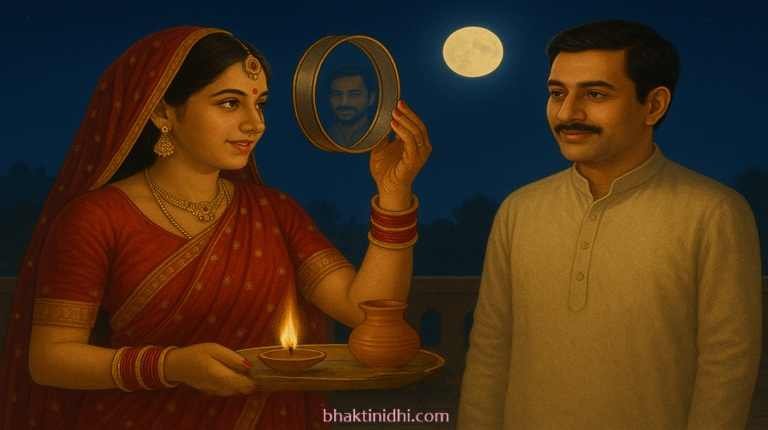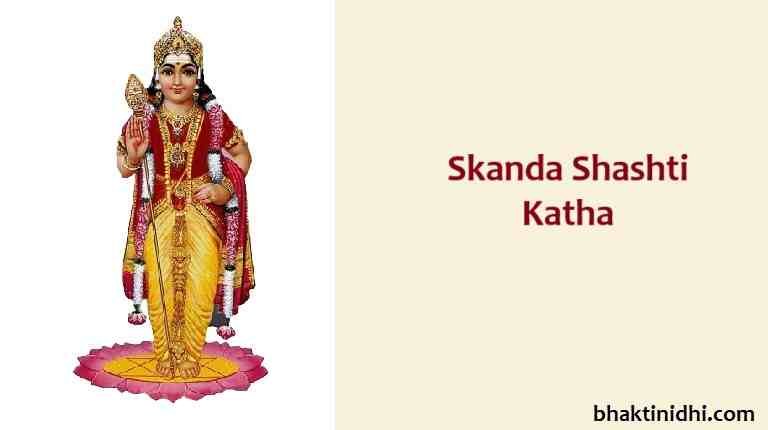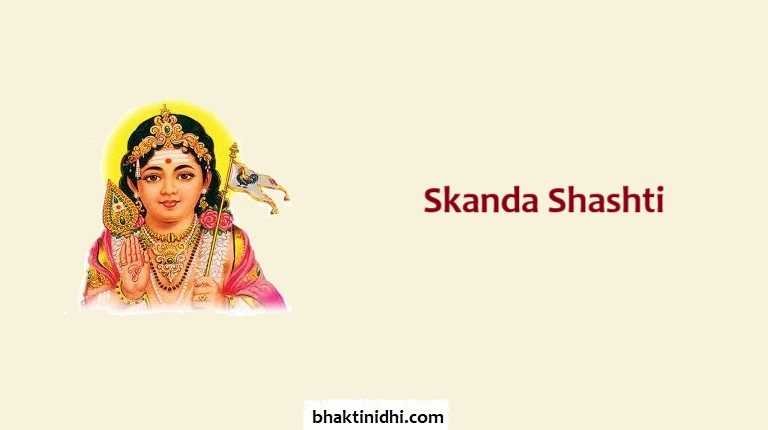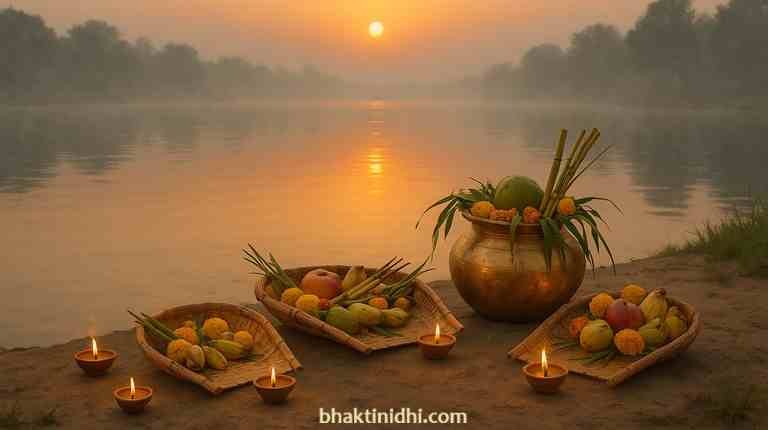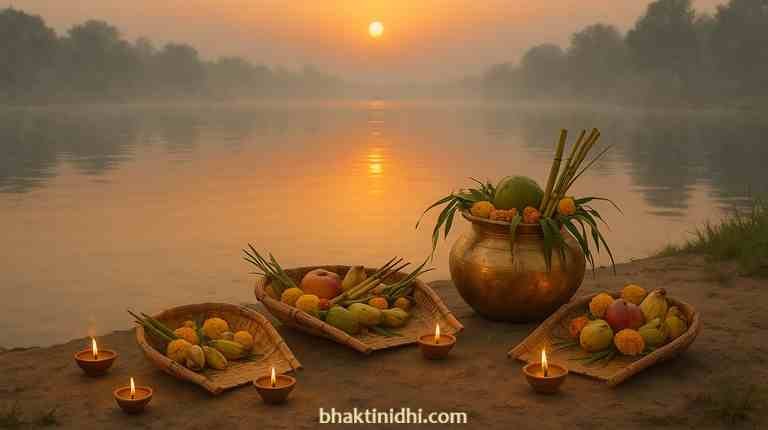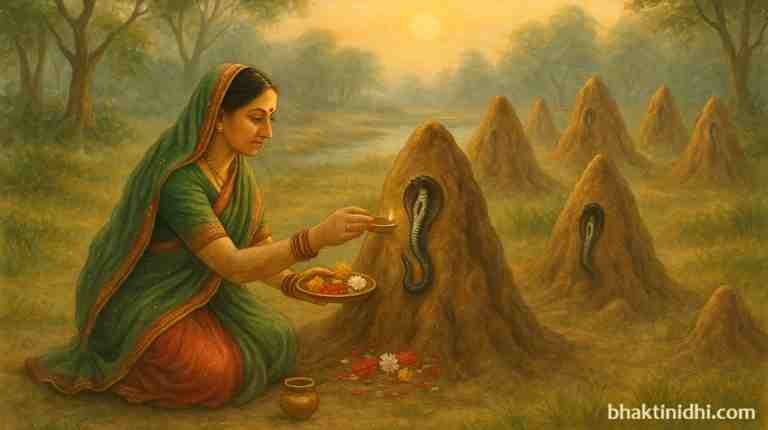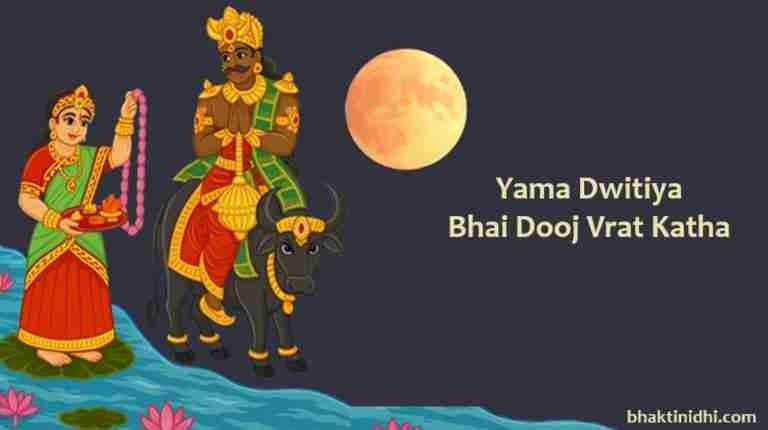Karwa Chauth is a traditional Hindu festival observed primarily by married women in North India, particularly in the states of Punjab, Haryana, Himachal Pradesh, Rajasthan, Uttar Pradesh, and parts of Madhya Pradesh. It is a day when women fast from sunrise to moonrise for the health, longevity, and prosperity of their husbands. Know everything about Karwa Chauth festival such as date, meaning, Rituals, Puja Vidhi or Procedure, Aarti, etc.
Karwa Chauth
Meaning of Karwa Chauth
Karwa means “clay pot” (used to hold water during rituals). Chauth means “fourth” — the festival falls on the fourth day of Krishna Paksha (waning moon) in the Hindu month of Kartik (October-November).
Who Celebrates It?
Traditionally, married Hindu women observe this fast for their husbands. In modern times, some unmarried women also observe it to pray for an ideal future partner.
When is Karwa Chauth Celebrated?
It is celebrated on the fourth day of Krishna Paksha in the month of Kartik. It falls nine days before Diwali, usually in October or early November. The exact date varies each year.
Rituals & Celebrations
Married women (especially newlyweds) wake up early and eat Sargi, a pre-dawn meal. Sargi is traditionally prepared by the mother-in-law and includes fruits, sweets, dry fruits, and sometimes savory items. After eating, the woman starts her fast, which continues without food or even water until moonrise.
Women spend the day in prayers, grooming, storytelling, and rest. They often dress in bridal or festive attire, mostly in red, maroon, or other bright colors. Mehendi (henna) is applied on hands – a key part of the celebration. They gather in groups in the afternoon or evening for the Karwa Chauth puja.
Karwa Chauth Puja Samagri
- Karwa (earthen pot) filled with water
- Sieve (chalni)
- Diya (lamp)
- Roli (red powder), rice (akshat), kumkum
- Sindoor, bangles, sweets
- Idol or image of Goddess Parvati and Lord Shiva
- A Puja thali (plate) with diya, sweets, and water for arghya (moon offering)
- Karwa Chauth Katha
Karwa Chauth Puja Vidhi (Procedure)
To perform the Karwa Chauth Puja, follow these traditional steps:
Preparation:
- Clean the puja area and take a bath.
- Dress in traditional attire, preferably in red or other auspicious colors.
Assemble the Puja Thali:
- Fill the Karwa with water and place a coin or piece of jewelry inside.
- Decorate the Karwa with Swastik symbols using roli and rice.
- Place the Karwa in the center of your thali along with a diya, sweets, sindoor, rice, roli, and flowers.
Setup the Deities:
- Place images or idols of Goddess Parvati and Lord Shiva in front of you.
- Light the diya and incense sticks.
Offerings and Prayer:
- Apply tilak to the Karwa.
- Offer rice, roli, flowers, sindoor, bangles, and sweets to the goddess, symbolizing marital bliss and devotion.
Katha and Aarti:
- Listen to or read the Karwa Chauth Vrat Katha – Sit in a circle with their puja thalis, An elderly woman or priestess narrates the Katha. Pass the thalis around in a ritual, known as “feri”, singing traditional songs.
- After the story, perform the Aarti with the other women or family members.
Moonrise Ritual:
- Once the moon appears, go outside or to a rooftop with your thali.
- Look at the moon through a Chalni (sieve) and offer Arghya (water) to it.
- Then look at your husband’s face through the same sieve.
- He then gives you water or the first bite of food, marking the end of your fast.
Karwa Chauth Aarti
Om Jai Karwa Mata, Maiya Jai Karwa Mata ।
Tumko nisha din dhyaavat, joroo pati ke data ॥
Om Jai Karwa Mata ॥
Shiv Shankar ke sang baithi, Shobha ati suhaayi ।
Chandra samaan mukh raakhi, Kiya singaar bhaari ॥
Om Jai Karwa Mata ॥
Suhaagan yeh vrat karati, Pati ki lambi aayu ।
Aap kripa karke maiyya, Poora karo kaam tu ॥
Om Jai Karwa Mata ॥
Karwa lo tum poojaa, Laddoo se bharo thaali ।
Satti Narayani maiyya, Sab par kripa tumhaari ॥
Om Jai Karwa Mata ॥
Karwa Chauth Legends
The most famous legend is of Queen Veeravati, who broke her fast before moonrise due to a trick played by her brothers. Her husband died but was brought back to life through her devotion.
Another story is about Savitri and Satyavan. This tale tells of Savitri’s unwavering love and courage as she faces Lord Yama, the god of death. When her husband Satyavan dies, Savitri follows Yama and engages him in a powerful dialogue. Through her wisdom, devotion, and determination, she ultimately wins Yama’s admiration and secures Satyavan’s life, bringing him back from death.
Conclusion
Karwa Chauth is a special festival that shows the love, care, and deep bond between a husband and wife. On this day, married women keep a strict fast without food or water and pray for the long and healthy life of their husbands. It’s not just about fasting — it’s a day full of tradition, beauty, and emotion. In today’s world, Karwa Chauth has also become a time for couples to celebrate love and togetherness, with many husbands also choosing to fast or give special gifts. Whether seen as a religious tradition or a romantic gesture, Karwa Chauth remains a powerful symbol of devotion and commitment in marriage.
